Hello! I’m Shenny, an intern at Michi-no-Eki Aso
If you’re traveling in Kumamoto during the summer, don’t miss the Onda Festival at Aso Shrine!
Held every July, this traditional ritual is more than a religious event—it’s a great way to experience local culture and community spirit firsthand.
As an intern at Michi-no-Eki Aso, this was my first time getting so close to such a traditional event, and I was truly impressed by its unique atmosphere and cultural richness.
Aso Onda Festival: A Procession of Blessings through the Rice Fields
The Onda Festival (officially called Otaue Shinkōshiki) is one of Aso Shrine’s most important annual rituals. It’s held to thank the deity Aso Daimyōjin and pray for a bountiful harvest.
We arrived at the shrine around 11:30 a.m., just in time to see the procession start. As the drums and bells rang, the atmosphere turned solemn yet festive.
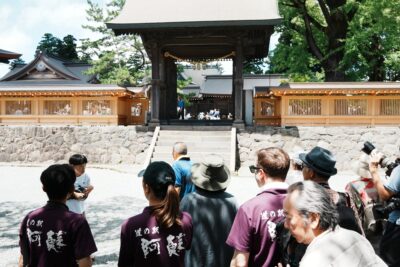
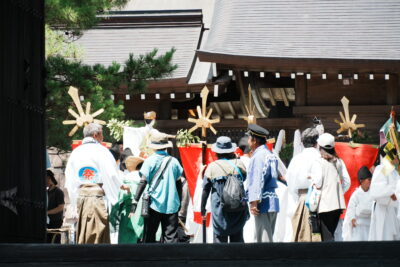
Twelve deities ride on four mikoshi (portable shrines), accompanied by a 200-person parade. Alongside the main procession are figures like white-robed women called “Unari,” mikoshi bearers. The route takes them through Aso’s lush green rice fields before returning to the shrine.
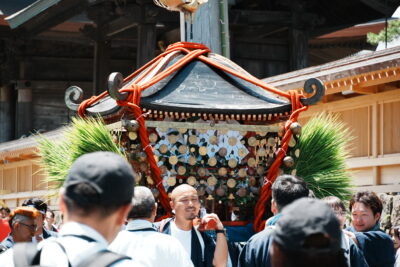


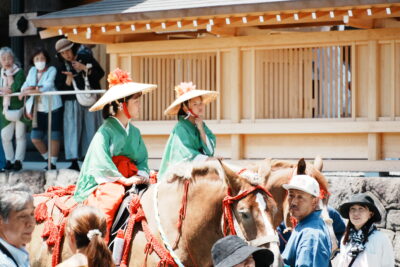
One of the most striking sights is the group of Unari, women dressed in white and balancing offerings on their heads. They serve as sacred attendants in this ceremonial journey.
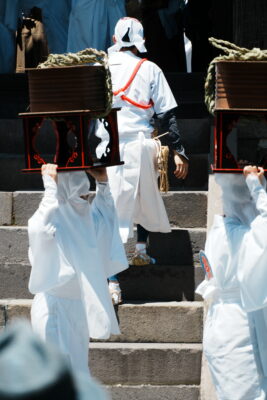
I also participated in a local custom called “crawling under the mikoshi” to receive blessings. People touch the sacred shrine and pass beneath it for good fortune—similar to Taiwan’s Mazu pilgrimage ritual, where devotees crawl under palanquins for blessings.
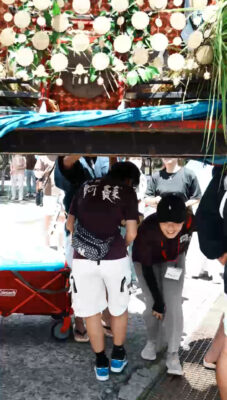

Nakae Iwato Kagura: A Mythical Night Performance at Aso Shrine
A few days later, we returned to Aso Shrine to watch a special night performance of the Nakae Iwato Kagura, a sacred dance drama with deep roots. Originating in the Edo period, this style of Kagura blends Shinto music, sacred dance, and Japanese mythology, and is officially recognized as a national intangible folk cultural asset.
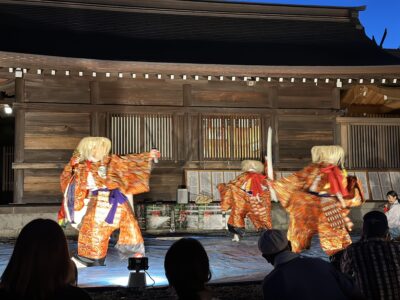
The festival grounds had a lively, almost carnival-like vibe—food stalls lined the streets, and people sat on mats under the stars, like a giant outdoor picnic. 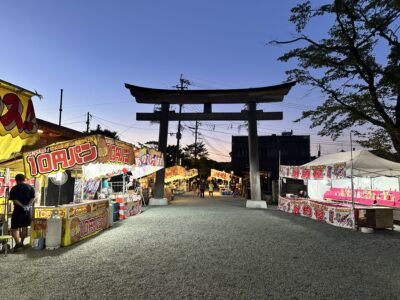
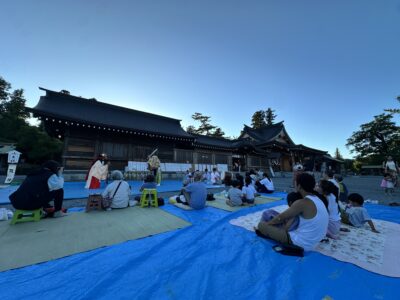
We watched Act 20: Shibahiki, a theatrical dance reenacting a myth where gods pull sacred trees from the mountain to prepare for the Amano-Iwato ritual. During the performance, audience members were even invited to join a symbolic tug-of-war with the gods—representing divine interaction and communal prayer.
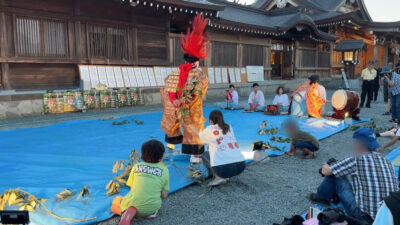
While some kids were scared of the performers’ masks (and cried!), it made the experience unforgettable.
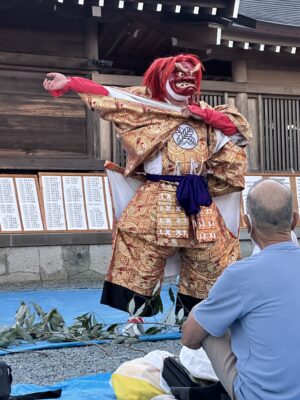
As for me? I got scooped up and spun around in a surprise performance twist—an unexpected “princess carry” moment with a god! 🤣
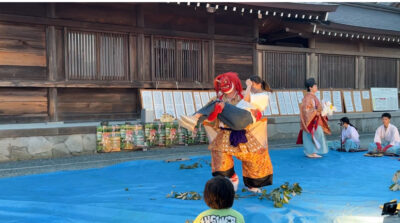
A Deeply Immersive Cultural Experience in Aso
Before this, I thought Japanese festivals were mostly for watching from the sidelines. But in Aso, I felt like I was actually part of it.
From waiting to crawl under the mikoshi, to sitting on the ground watching sacred Kagura, and even getting pulled into the show—it was way more interactive and emotional than I expected.
If you’re visiting Aso, I highly recommend checking the festival calendar ahead of time.
Major events include the Rice Planting Festival (March), Onda Festival (July), Harvest Festival (September), and irregular Kagura performances. These community-based traditions offer a much deeper experience than typical sightseeing.
#AsoShrine #OndaFestival #NakaeIwatoKagura
#KumamotoSummerFestival #JapaneseTraditionalFestival
#LocalCultureExperience #CulturalInternship #MichinoEkiAso #VisitAso

